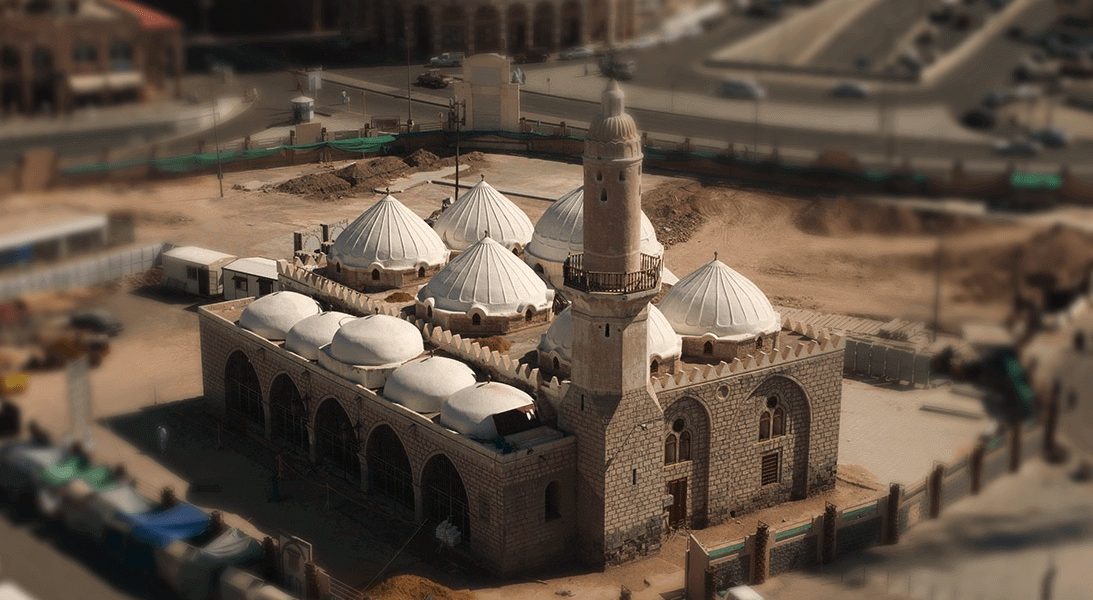Masjid al Ghamamah: Previously known as Masjid Musalla is located on the southwest side of Masjid an-Nabawi. This place, which is 500 meters away from Babu’s-Salam and is the last place where our Prophet (pbuh) prayed during Eid Al Fitr and Eid al Adha. The name of this place as El-Gamama is based on the narration of our Nabi (alayhis salam) that Gamama, which means cloud in Arabic, came in front of the sun while our Prophet (alayhis salam) was praying and protected him from the sun.
The Masjid was built during the rule of Omar Bin Abdulaziz in Madinah Munawwarah and was renovated by Sultan Hasan Bin Muhammed Bin Kalavun El-Salihi in 761 Hijri. The Masjid , which was repaired during the reign of Sultan İnal in 861 Hijri, was completely renovated by Sultan Abdulmecit I. Except for some repairs made during the Ottoman Sultan Abdulhamid Al Sani and Saudi periods, its last renovation continues until today. It was recorded that used to be attended for rain prayer as well for some days in the past.
The masjid, which has a rectangular appearance, consists of two parts, the entrance and the place where prayer is performed. Entrance: The entrance, which is 26 m long and 4 m wide, is rectangular in shape. Its roof consists of 5 round domes placed on pointed chokes, and the highest of the domes is the middle dome placed over the outer entrance of the mosque. These 5 domes are at a lower altitude than the 6 domes that form the roof of the prayer hall. The length of the prayer hall is 30 meters and the width is 15 meters, and it is divided into 2 porticoes. The roof of this place consists of 6 domes consisting of two equal rows, the largest of which is the Mihrab dome. There are 2 rectangular windows on the east wall of the place, two small windows above each window and another circular window above them. The same is present on the west wall of the room. The mihrab is located in the middle of the south wall of the room. To the right of the mihrab, there is a minbar with a nine-step staircase, made of marble and a dome with a curved appearance. There are inscriptions written in Ottoman on the ornate wooden door of the pulpit. The lower part of the body of the minaret, located in the northwest corner of the masjid, was rectangular as much as the masjid wall height and later became octagonal. At the end of this, there is a balcony with a wooden railing, and above it is a tubular body, the door of which opens to the same sheath.




